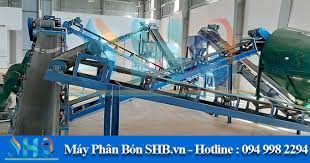In the intricate landscape of modern businesses, ensuring smooth and consistent operations is paramount. Companies strive to maintain high standards, compliance, and efficiency across various processes. This is where Creating effective SOPs for customer experience play a pivotal role. SOPs serve as the guiding hand, outlining step-by-step instructions, protocols, and best practices to streamline operations and ensure uniformity.
Defining Standard Operating Procedures:
At its core, an SOP is a comprehensive document that delineates the prescribed methods for executing a particular task or activity within an organization. SOPs cover a wide array of processes, ranging from routine administrative tasks to complex technical procedures. The primary objective is to provide a clear, standardized roadmap for employees to follow, leaving little room for ambiguity.
The Pillars of SOPs:
- Clarity and Precision:
SOPs are crafted with meticulous attention to detail. Every step, from initiation to completion, is articulated in a clear and concise manner. This ensures that anyone following the procedure can easily understand and execute the task accurately. - Consistency:
Uniformity is the cornerstone of SOPs. By establishing consistent practices, organizations can minimize errors, reduce variability, and enhance overall operational efficiency. This is particularly crucial in industries where precision and reliability are paramount. - Compliance and Quality Assurance:
SOPs serve as a safeguard against non-compliance with regulations and industry standards. They provide a documented framework for adhering to legal requirements, quality control measures, and safety protocols. This not only mitigates risks but also contributes to the organization’s reputation for reliability and responsibility. - Training and Onboarding:
SOPs play a crucial role in the onboarding process for new employees. They serve as a comprehensive training manual, facilitating a smooth transition for newcomers and ensuring that they quickly become acquainted with the organization’s procedures. - Continuous Improvement:
SOPs are not static documents; they evolve with time. Regular reviews and updates are essential to keep them aligned with changing circumstances, technologies, and industry standards. This commitment to continuous improvement ensures that SOPs remain effective and relevant.
Implementing SOPs:
Implementing SOPs involves a multi-faceted approach:
- Identification and Prioritization:
Begin by identifying the key processes that significantly impact the organization’s performance. Prioritize these processes based on their criticality, complexity, and frequency. - Collaboration:
Engage relevant stakeholders, including subject matter experts and frontline employees, in the SOP development process. Their insights are invaluable for creating realistic and effective procedures. - Documentation:
Draft comprehensive SOPs, incorporating detailed steps, relevant visuals, and necessary references. Ensure that the language used is accessible to the target audience and that the procedures are easily understandable. - Training and Familiarization:
Conduct thorough training sessions to familiarize employees with the SOPs. Provide opportunities for clarification and address any queries to ensure everyone is on the same page. - Feedback and Iteration:
Establish a feedback loop to gather insights from those directly involved in executing the SOPs. Use this feedback to make necessary adjustments, fostering a culture of continuous improvement.
Challenges and Best Practices:
While SOPs are indispensable, their successful implementation may encounter challenges. These include resistance to change, inadequate communication, or insufficient training. To mitigate these challenges, organizations should:
- Communication:
Clearly communicate the reasons behind SOP implementation and emphasize the benefits, both at an organizational and individual level. - Training Programs:
Invest in robust training programs to ensure that employees not only understand the SOPs but also appreciate their role in improving overall efficiency and quality. - Regular Audits:
Conduct regular audits to assess the effectiveness of SOPs. Identify areas for improvement and address any deviations promptly. - Technology Integration:
Leverage technology to facilitate the accessibility and tracking of SOPs. Digital platforms and document management systems can enhance the efficiency of SOP implementation.
In conclusion, SOPs serve as the backbone of organizational efficiency and consistency. By establishing clear guidelines, organizations can navigate the complex terrain of modern business with confidence. SOPs not only provide a roadmap for day-to-day operations but also contribute to a culture of continuous improvement, ensuring that organizations remain agile and responsive to the ever-evolving business landscape.



